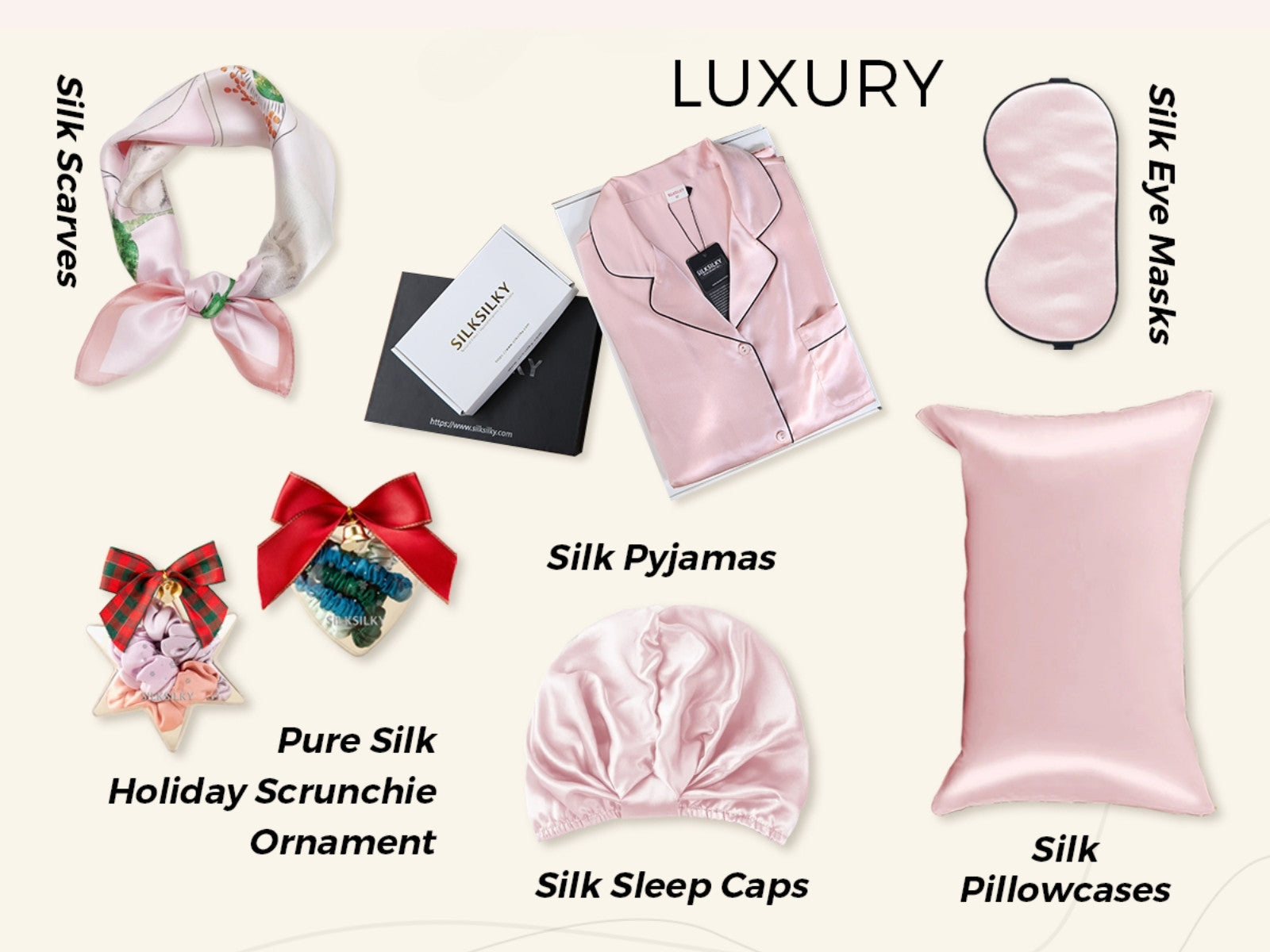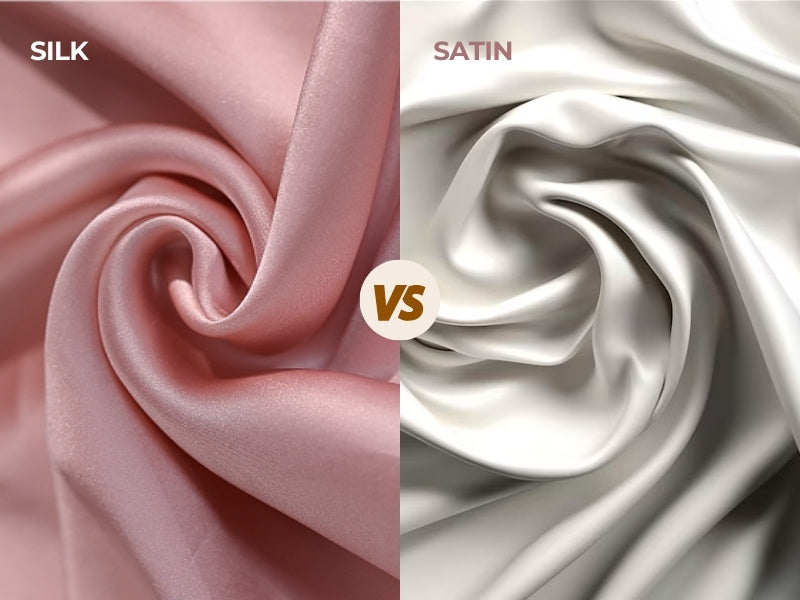Silk Clothes vs Cotton Clothes: Which Clothes Are the Better Choice
Table of Contents
Introduction
In the field of textiles, silk and cotton are two popular fabrics. They each have unique qualities that can meet the needs and preferences of different consumers. This article explores the characteristics of these two fabrics in clothing, including their definitions, advantages, disadvantages, and conducts a comparative analysis to explore whether silk clothes are more suitable for the human body or cotton clothes are more beneficial to the human body. Which clothes of these two fabrics is a better choice for people?
Understanding of the two fabrics
Understanding Silk

Definition and Characteristics
Silk is a luxurious and exquisite natural fiber known for its smooth texture and natural sheen. It is produced from the cocoons of silkworms, primarily cultivated in Asia, where the delicate process of silk production has been refined over centuries. Silk fibers are incredibly fine and strong, with a unique ability to reflect light, giving the fabric its characteristic shimmering appearance.
Production Process and Sources
The production of silk begins with the cultivation of silkworms, specifically the Bombyx mori species, which are raised under controlled conditions to ensure the quality of the silk. The silkworms spin cocoons made of silk threads, which are harvested carefully to preserve the length and quality of the fibers. The process of extracting silk involves boiling the cocoons to soften the sericin (silk protein) and then unwinding the fibers to produce long strands of raw silk.
Silk production is labor-intensive and requires skilled craftsmanship. The majority of silk production occurs in countries such as China, India, Japan, and Thailand, where traditional methods are still employed alongside modern techniques to maintain the fabric's high quality and luxurious appeal.
Primary Uses and Historical Background
Silk has a rich historical background and has been prized for centuries for its beauty and luxurious feel. Initially developed in ancient China around 3,000 BC, silk quickly became a symbol of wealth and status. The Silk Road, an ancient network of trade routes connecting China with the Mediterranean, facilitated the spread of silk and other goods across cultures and civilizations.
Silk's primary uses encompass a wide range of applications:
Silk clothing: Silk fabrics are highly valued in fashion for their elegance and comfort. They are used to create luxurious evening gowns, suits, ties, and lingerie.
Home Furnishings: Silk is used in home décor items such as curtains, pillow covers, and upholstery, adding a touch of sophistication and luxury to interiors.
Industrial Applications: Beyond fashion and home furnishings, silk's strong and smooth fibers are used in specialized applications like parachutes, surgical sutures, and high-quality paper.
Understanding Cotton
Definition and Characteristics
Cotton is a natural fiber obtained from the seedpods of the cotton plant (Gossypium). It is renowned for its versatility, comfort, and extensive use in various textile applications worldwide. Cotton is soft and fluffy, growing in protective capsules called bolls around the seeds of the cotton plant. Its key attributes include breathability, absorbency, and hypoallergenic properties, making it comfortable to wear against the skin.
Growing Environment and Harvesting Process
Cotton thrives in warm climates with ample sunshine and moderate rainfall. Major cotton-producing regions include the southern United States, India, China, Pakistan, and Brazil. The cotton plant undergoes several growth stages, eventually producing mature cotton bolls. These bolls burst open to reveal the cotton fibers, which are then harvested either mechanically or by hand.
Primary Uses and Popularity
Cotton is one of the most widely utilized fibers globally due to its versatility and comfort. It finds extensive application in:
Apparel: Cotton fabrics are used in everyday clothing such as t-shirts, jeans, dresses, and underwear, favored for their softness and breathability.
Home Textiles: Cotton is prevalent in bedding (sheets, pillowcases), towels, curtains, and upholstery owing to its durability and comfort.
Industrial Applications: Cotton's strength and absorbency make it suitable for industrial purposes such as medical products, canvas, and filter cloths.
The advantages of both types of clothing
Benefits of Silk Clothing
Silk clothing offers a range of unique benefits that make it highly desirable in various contexts:
Luxurious Comfort: Silk is celebrated for its soft and smooth texture, providing a luxurious feel against the skin. This comfort is particularly appreciated in intimate apparel and high-end fashion items.
Temperature Regulation: Silk has excellent temperature-regulating properties, keeping the wearer cool in summer and warm in winter. This natural insulating ability makes it a versatile choice across different seasons.
Hypoallergenic: Silk is naturally hypoallergenic and resistant to dust mites and mold, making it an ideal choice for individuals with sensitive skin or allergies.
Moisture Absorption: Silk can absorb moisture effectively without feeling damp, helping to keep the skin dry and comfortable. This property makes it suitable for both clothing and bedding.
Gentle on Skin and Hair: The smooth surface of silk clothes reduces friction on the skin and hair, minimizing hair breakage and skin irritation. It is often recommended for those with delicate skin or hair.
Durability: With proper care, silk garments can be highly durable. Silk fibers are strong despite their delicate appearance, and high-quality silk items can last for many years.
Biodegradable and Sustainable: Silk is a natural fiber derived from silkworms, making it biodegradable and environmentally friendly. Sustainable silk production methods further enhance its eco-friendly credentials.
Benefits of Cotton Clothing
Cotton clothing is widely favored for its practical benefits and everyday comfort:
Breathability: Cotton is highly breathable, allowing air to circulate through the fabric. This property keeps the body cool and comfortable, making it ideal for warm weather and physical activities.
Softness: Cotton fabrics are naturally soft and gentle on the skin, providing comfort for extended wear periods. This characteristic makes cotton a popular choice for daily clothing and sleepwear.
Absorbency: Cotton fibers can absorb moisture efficiently, helping to wick sweat away from the skin. This absorbent quality contributes to the fabric's comfort and suitability for various climates.
Durability: Cotton is known for its durability and strength. It can withstand frequent washing and retains its shape and integrity over time, making it suitable for everyday use.
Versatility: Cotton fabrics are versatile and can be blended with other fibers to enhance their properties. This versatility allows for a wide range of clothing styles and uses, from casual wear to formal attire.
Easy Care: Cotton is easy to care for and can typically be machine-washed without special instructions. This convenience adds to its appeal for busy lifestyles.
Natural and Renewable: Cotton is a natural fiber derived from the cotton plant's seed pods, making it renewable and environmentally friendly. Sustainable farming practices further promote its eco-friendly profile.
Disadvantages of both types of clothing
Drawbacks of Silk Clothing
While silk clothing offers numerous benefits, it also comes with certain drawbacks that should be considered:
Cost: Silk is generally more expensive compared to many other fabrics due to the labor-intensive production process and the limited geographic regions where silkworms can be cultivated.
Care Requirements: Silk garments require delicate care. They often need to be hand-washed or dry-cleaned to preserve their delicate fibers and sheen. This can add to the overall cost and maintenance effort.
Durability: Despite being strong, silk can be susceptible to abrasion and sunlight exposure, which can weaken the fibers over time. This may limit its longevity compared to more durable fabrics.
Wrinkling: Silk garments tend to wrinkle easily, requiring careful handling and sometimes ironing or steaming to maintain a smooth appearance.
Moisture Sensitivity: Silk can absorb moisture, but excessive moisture can weaken the fibers and cause the fabric to lose its shape or shrink. This makes it less ideal for high-humidity environments.
Color Fading: Silk fabrics may experience color fading over time, especially when exposed to sunlight or washed frequently.
Environmental Impact: Traditional silk production involves the use of chemicals in the processing of silk fibers, which can have environmental implications if not managed properly.
Drawbacks of Cotton Clothing
Despite its popularity, cotton clothing also has its drawbacks that should be considered:
Wrinkling: Cotton fabrics are prone to wrinkling, especially when machine-dried or packed tightly. Ironing or steaming may be necessary to maintain a neat appearance.
Absorbency: While cotton's absorbency is a benefit, it can also be a drawback in some situations. Wet cotton garments may feel heavy and take longer to dry compared to synthetic fabrics.
Shrinkage: Cotton fibers tend to shrink when exposed to heat, particularly during washing and drying. This shrinkage can affect the fit and comfort of garments over time.
Durability: While cotton is generally durable, the fabric can weaken over repeated washings, especially if washed at high temperatures or with harsh detergents.
Environmental Concerns: Conventional cotton farming can have environmental impacts due to pesticide use, water consumption, and soil degradation. Organic and sustainable farming practices aim to mitigate these issues.
Color Fading: Cotton fabrics may also experience color fading over time, particularly with frequent washing and exposure to sunlight.
Allergies: Although less common, some individuals may have allergic reactions to cotton fibers or chemicals used in processing.
Comparative Analysis: Silk vs. Cotton for Clothing
When choosing between cotton and silk for clothing, several factors come into play that can significantly impact comfort, durability, and overall satisfaction. Below is a detailed comparative analysis focusing on key aspects that influence the choice between these two fabrics.
Temperature Regulation
Silk Clothes: Excellent at regulating temperature; keeps you cool in summer and warm in winter due to its natural thermal properties.
Cotton Clothes: Breathable and helps regulate temperature well throughout the year, making it suitable for various climates.
Comfort
Silk Clothes: Exceptionally soft and smooth with a luxurious feel against the skin, providing unparalleled comfort.
Cotton Clothes: Comfortable with a natural feel, suitable for all seasons and offering a cozy sensation.
Durability
Silk Clothes: Highly durable with proper care, can last for many years without losing its quality or texture.
Cotton Clothes: Durable and able to withstand frequent washing; longevity depends on thread count and weave quality.
Breathability
Silk Clothes: Excellent breathability, helps maintain a comfortable sleep environment by allowing airflow and reducing humidity.
Cotton Clothes: Very breathable, absorbs moisture efficiently, keeping you dry and comfortable in various conditions.
Hypoallergenic Properties
Silk Clothes: Naturally hypoallergenic, resistant to dust mites and mold, making it suitable for sensitive skin.
Cotton Clothes: Generally hypoallergenic but can retain allergens if not washed regularly; suitable for most skin types.
Impact on Skin and Hair
Silk Clothes: Smooth surface reduces friction, helps prevent hair breakage, and minimizes wrinkles on the skin, promoting healthier hair and skin.
Cotton Clothes: Gentle on the skin and hair, allows for natural movement during sleep, and promotes skin breathability.
Conclusion
In conclusion, both silk and cotton offer distinct advantages based on their unique properties and suitability for different preferences and needs. Silk clothes excels in providing luxurious comfort, excellent temperature regulation, and hypoallergenic benefits, while cotton clothes is appreciated for its durability, breathability, and versatility across seasons. The choice between these fabrics ultimately depends on individual preferences, climate conditions, and specific garment requirements. Understanding these differences empowers consumers to make informed decisions that best meet their clothing needs and preferences.
![[Light Blue] SilkSilky Pure Silk Notch Collar Women's Pajamas 001,](http://silksilky.com/cdn/shop/files/ab83afb9301666ee2f174a8ae72ffda4_4e9bb488-7880-40fe-9e69-f0fd823857c5.jpg?v=1764653199&width=1200)
![[Light Blue] SilkSilky Pure Silk Notch Collar Women's Pajamas 002,](http://silksilky.com/cdn/shop/files/db8dbeee5354fe3b631b963715847ffe.jpg?v=1764653202&width=1200)
![[Dark Blue] SilkSilky 19Momme Pure Silk Notch Collar Women's Pajamas 001](http://silksilky.com/cdn/shop/files/a3a1bba736f86048192bee870ad3e638_be7e8977-dfbe-4235-87ac-1471e906d5e9.jpg?v=1763547174&width=1200)
![[Dark Blue] SilkSilky 19Momme Pure Silk Notch Collar Women's Pajamas 002](http://silksilky.com/cdn/shop/files/3a1b158868225840e725562c4d5c7c9c_50e1a43d-6284-4def-9c49-bb64a6300eee.jpg?v=1763547174&width=1200)
![[Pink] SilkSilky Pure Silk Sleep Cap 001](http://silksilky.com/cdn/shop/files/SilkSilky_Pure_Silk_Sleep_Cap_Pink_001_C-250529006.jpg?v=1762221980&width=1200)
![[Pink] SilkSilky Pure Silk Sleep Cap 002](http://silksilky.com/cdn/shop/files/1738767123_1282c43b-9916-42b4-90f1-1050ec5516b3.jpg?v=1768284813&width=1200)
![[White] SilkSilky Pure Silk V Neck Nightgown 001,](http://silksilky.com/cdn/shop/files/a8ae95260a57844b1e2e00c4fcfabdcc_b922b270-af10-4e96-9493-0d877bd663db.jpg?v=1764140639&width=1200)
![[White] SilkSilky Pure Silk V Neck Nightgown 002,](http://silksilky.com/cdn/shop/files/24ac506750f8c38c51bb5b6d0ee15287.jpg?v=1764140639&width=1200)
![[Black] SilkSilky Pure Silk V Neck Nightgown 001,](http://silksilky.com/cdn/shop/files/309cdab286f7f2533294847813befff7.jpg?v=1762227828&width=1200)
![[Black] SilkSilky Pure Silk V Neck Nightgown 002,](http://silksilky.com/cdn/shop/files/5a48f0d82005d1f54c120bf5f7e3ea5c.jpg?v=1762227830&width=1200)











